| HOME |
|---|
LACERTA
The Lizard
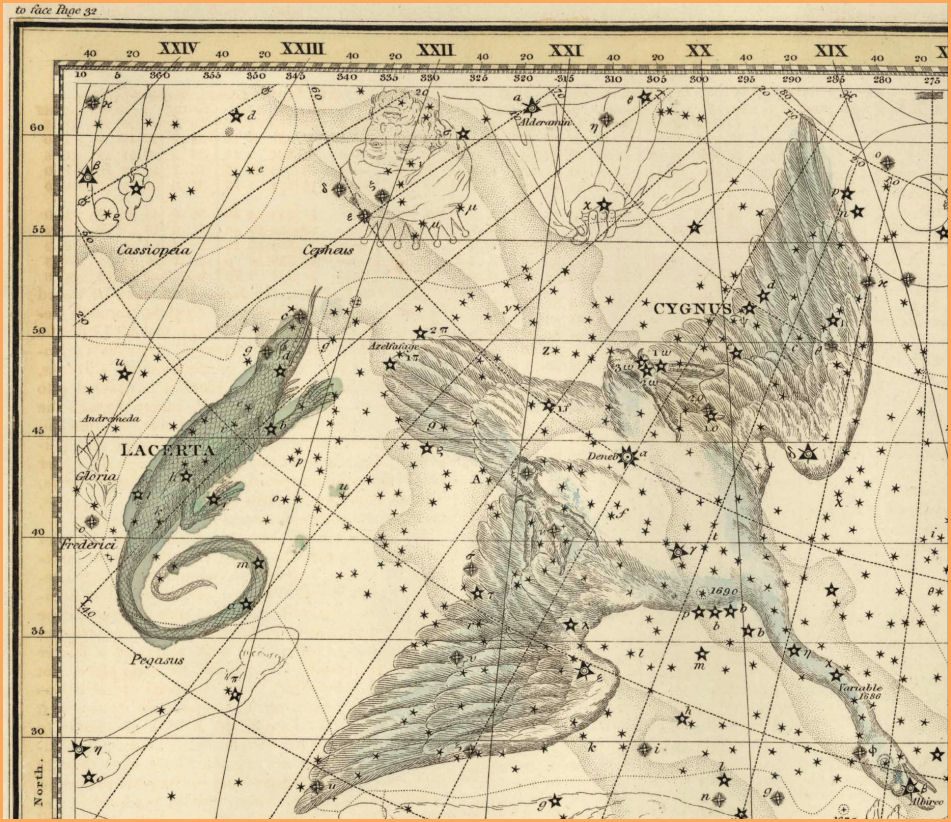
Lacerta - Celestial Atlas by Alexander Jamieson - 1822
| HOME |
|---|

On the edge of the Milky Way, Lacerta is a small, indistinct constellation, with not much to offer the casual observer. It was first identified as a constellation by Johannes Hevelius in 1687. Its zigzag pattern is similar to the much bigger, brighter "W" of nearby Cassiopeia, which has given rise to its nickname in some circles as The Little Cassiopeia.
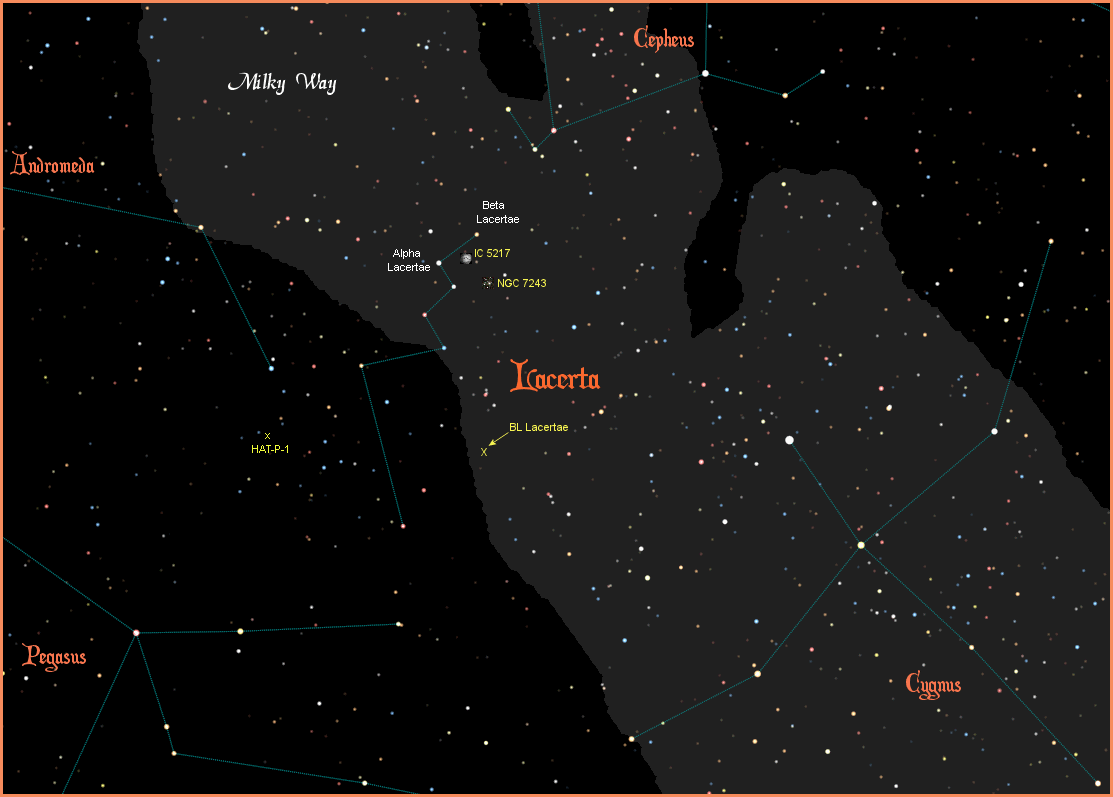
Lacerta has no named stars. Its brightest star is Alpha Lacertae, with a magnitude of 3.76. It is a A3V white main sequence star, about 100 light years away.
Beta Lacertae, on the tip of the lizard's nose, may have been the second brightest star in Bayer's time, but in the modern era, with a magnitude of 4.43, both 1 Lacertae and 5 Lacertae are slightly brighter. It is a G8III yellow giant, about 170 light years away.
There have been two planets discovered so far in Lacerta, and one of these planets was accommodating enough to transit (cross in front of) its host star, allowing scientists rare insights into some of the far away planet's characteristics. The host star is HAT-P-1, named for the Hungarian Automated Telescope Project. The star is also known as ADS 16402 B, one half of a binary system composed of two almost identical G0 yellow main sequence stars, very similar to our Sun. The system is 453 light years away and far out of visual range at magnitude 10.3.
The planet is HAT-P-1-b, and it is one of the more unusual planets discovered so far. Although it's 1.3 times the size of Jupiter, it has only 0.52 times Jupiter's mass, which would give the planet the consistency of cork, a previously unknown condition. The planet is only about 5 million miles from its sun (compared to Earth's 93 million miles), completing one orbit every 4.5 days. This classifies it as a "hot Jupiter", and pretty well precludes the existence of any kind of life.
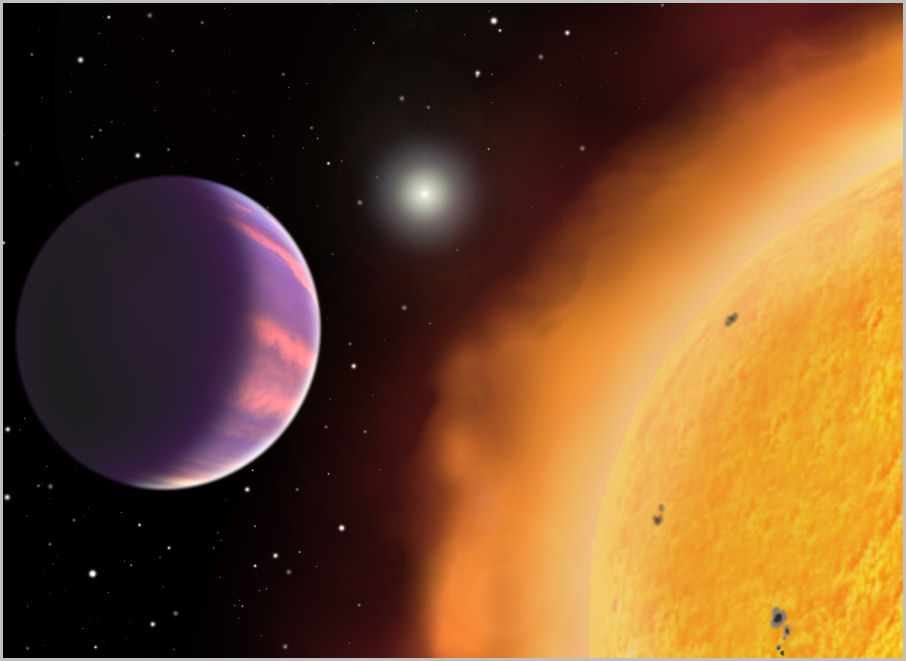
The second planet discovered in Lacerta is HAT-P-40-b, a gas giant orbiting a star over 1,600 light years away. For more information on these and other extrasolar planets, visit NASA's New Worlds Atlas, and The Open Exoplanets Catalogue.
Lacerta contains some very small, very faint nebulae, such as IC 5217, discernible only in large telescopes. It also has some very far away, very faint galaxies, and a few open star clusters, such as NGC 7243, about 3,000 light years away, at magnitude 6.4.
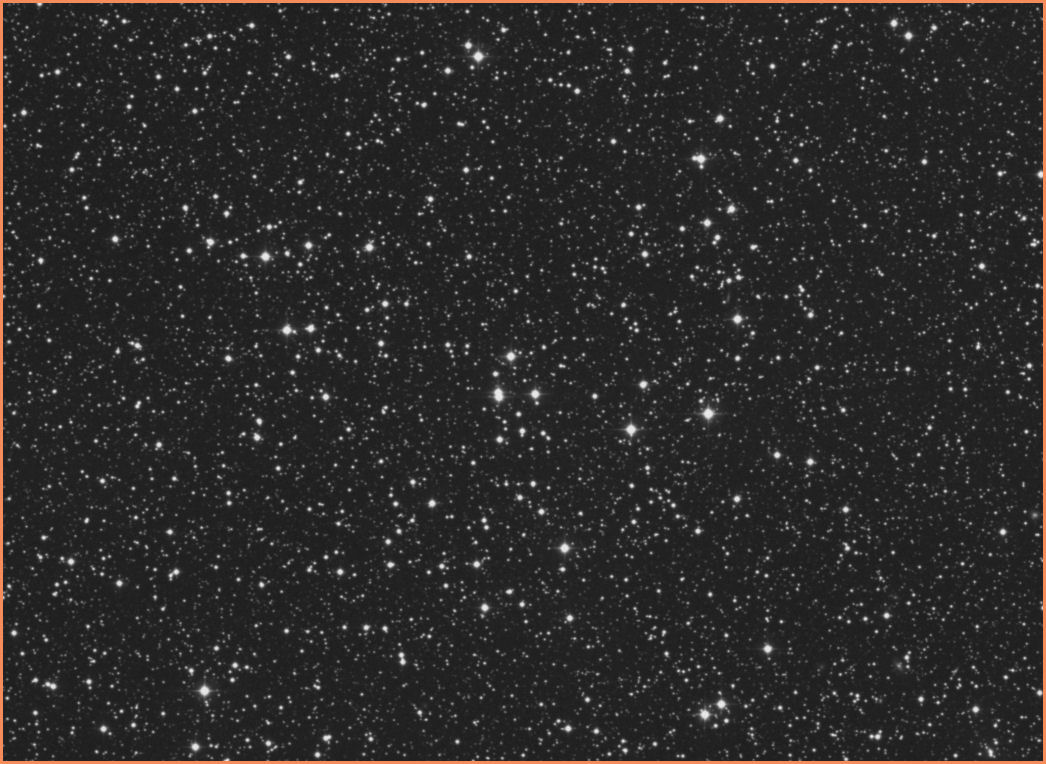
Lacerta does contain one object that deserves special note. Its name is BL Lacerta, discovered and catalogued in 1939 as a variable star, one of many found in our galaxy. But it didn't behave like other variable stars, and consequently was the subject of much study. It took almost half a century to determine that BL Lacertae was not a star at all, but the energy emitted by a super massive black hole at the center of a galaxy almost a billion light years away! It was a Quasar (Quasi-Stellar Object), the most powerful known energy source in the Universe.
Quasars can be thought of as black holes that are overflowing. It appears that when black holes reach a certain size and age they begin to eject super powerful jets of energy out into space that can be seen billions of light years away. But this Quasar in Lacerta had a spectrum that was slightly different, and scientists finally decided this was because the jets of energy just happened to be pointed directly at us. They chose to name this type of Quasar a Blazar, of which BL Lacertae was the first, and is now the prototype of this phenomenon.
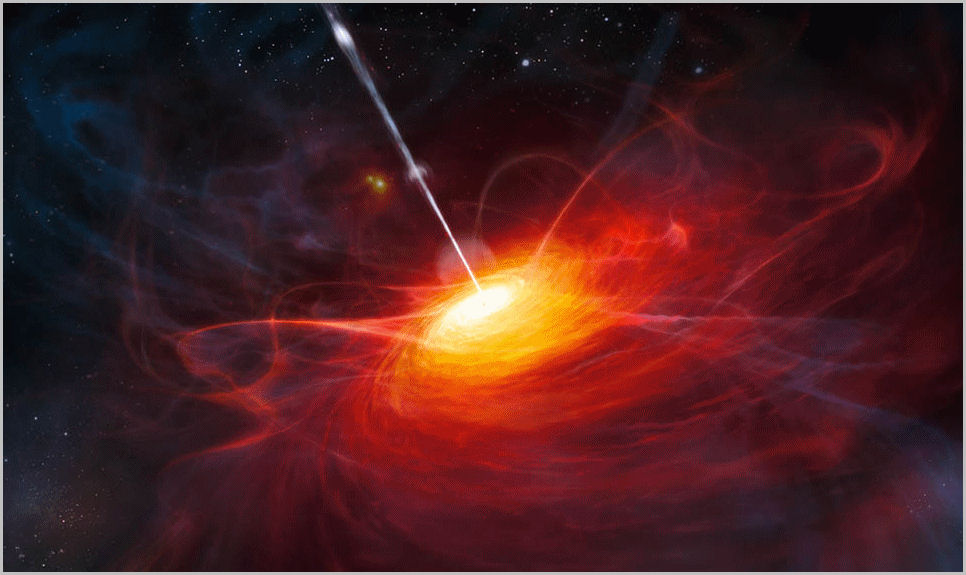
|
|
|
|
|
|